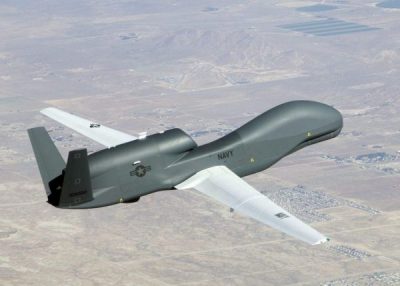Swarm Drone Technology and Military Escalation. Will US Drones Push the Middle East Past the Point of No Return?

Unmanned aerial systems (UASs) or drones, both armed and unarmed, have altered how states and insurgents conduct warfare in the Middle East. The widespread proliferation of these weapons, combined with the range of capabilities they confer and their potential to alter the logic of escalation between states, may cause significant inter-state conflict to occur.
An increase in proliferation
Since the Cold War, the US has attempted to stop the spread of unmanned systems by pursuing a limited export policy. However, states in the Middle East have responded by either producing their own (Israel, Turkey and Iran) or by importing them (Jordan, Iraq, Saudi Arabia and the UAE). Perhaps the most troubling development is yet to come; in November the US Defense Secretary, Mark Esper warned that China was beginning to export drones with fully autonomous offensive capabilities. Although China’s policy has been described as ‘ask no questions’, it is constrained by its desire to avoid arming non-state actors and therefore legitimising separatist movements.
Further, declining costs of commercial drones, combined with some DIY ingenuity has meant that groups such as ISIS and the Houthis rebels have been able to field aerial support, a capability that insurgent-type groups have lacked in the past. ISIS allegedly use UASs as light bombers and as reconnaissance aircraft to help coordinate devastating suicide attacks, whilst the Houthis (with Iranian assistance) have used drones as aerial improvised explosive devices (IEDs) for targeted assassination missions.
Evolving capacity, multiplying impact
One emerging capability of drone operators is ‘swarming’, where multiple systems are used to achieve a shared objective. A crude version of this, in conjunction with cruise missiles, was utilised during the attack on Aramco’s Abqaiq and Khurais oil facilities on September 14 (crude because true swarming requires that the individual systems alter their behaviour based on communication with one another and there is little evidence that this occurred). As a result of the attack, production of 5% of the global oil supply was temporarily halted and, the global price rose by 15%. Although Houthi rebels initially claimed credit, a consensus that Iran was responsible has emerged. The attack was successful, despite the Saudi Aramco sites enjoying protection from the Kingdom’s US ally, in the form of Patriot PAC-2 surface-to-air missile batteries but which proved entirely ineffective.
The Centre for the Study of the Drone recently found that the number of systems and products claiming to protect against UASs had risen from just 10 in 2015 to 235 by 2018. Perhaps not surprisingly, the counter-drone industry (at least in the civilian world) has been described as “peddling snake oil.” Given that very few sites are of such strategic importance in the Middle East (recall the impact on the global oil supply), this swarm technology may prove extremely effective in crippling key national infrastructure and military installations across the region, especially in lieu of a “silver bullet” solution to countering drones.
Likelihood of conflict escalation
In the immediate aftermath of the Aramco attack, Jens Stoltenberg, the head of NATO, expressed his deep concern that tensions would increase and accused Iran of “destabilising the whole region.” Nevertheless, the attack, perhaps surprisingly, did not lead to a military response.
In 2015, a wargame entitled ‘Game of Drones’ held in Washington DC concluded that that the presence of UASs in contested space had the effect of “lowering the threshold for military action in some circumstances because the perceived risk was lower.” However, this relies on the belief that your adversary will not treat the engagement of a manned system in the same way they would a drone in the same scenario. Even as advances in surveillance technology means UASs can reveal more of the battlefield, a new “fog of war” is introduced. This ambiguity, reflected in President Trump’s initial decision to launch counter-strikes against an Iranian attack, and then quickly to cancel, could lead to an escalation via two mechanisms.
First, a state could be baited into engaging a UAS, which is then used as a legitimising pretext to launch further strikes. Indeed, it has been suggested that “baiting” has been a significant facet of the Trump administration’s policy towards Tehran. The second mechanism is via miscalculation. Given the right set of conditions (perhaps a hawkish domestic base), repeated attacks on unmanned systems may compel one side to escalate, despite reluctance on both sides.
The emergence of autonomous and swarm drone technology across a range of actors, combined with an unclear logic of how targeting unmanned systems affect inter-state relations could, therefore, trigger conflict. The primary risk is that heightened short term tensions over drones lead to a conflict before longer-term issues can be solved. As these systems develop technologically and operationally – the emergence of autonomous systems will complicate the matter – close attention to the mechanisms involved in precipitating conflict in the Middle East must be made.
*
Note to readers: please click the share buttons above or below. Forward this article to your email lists. Crosspost on your blog site, internet forums. etc.

